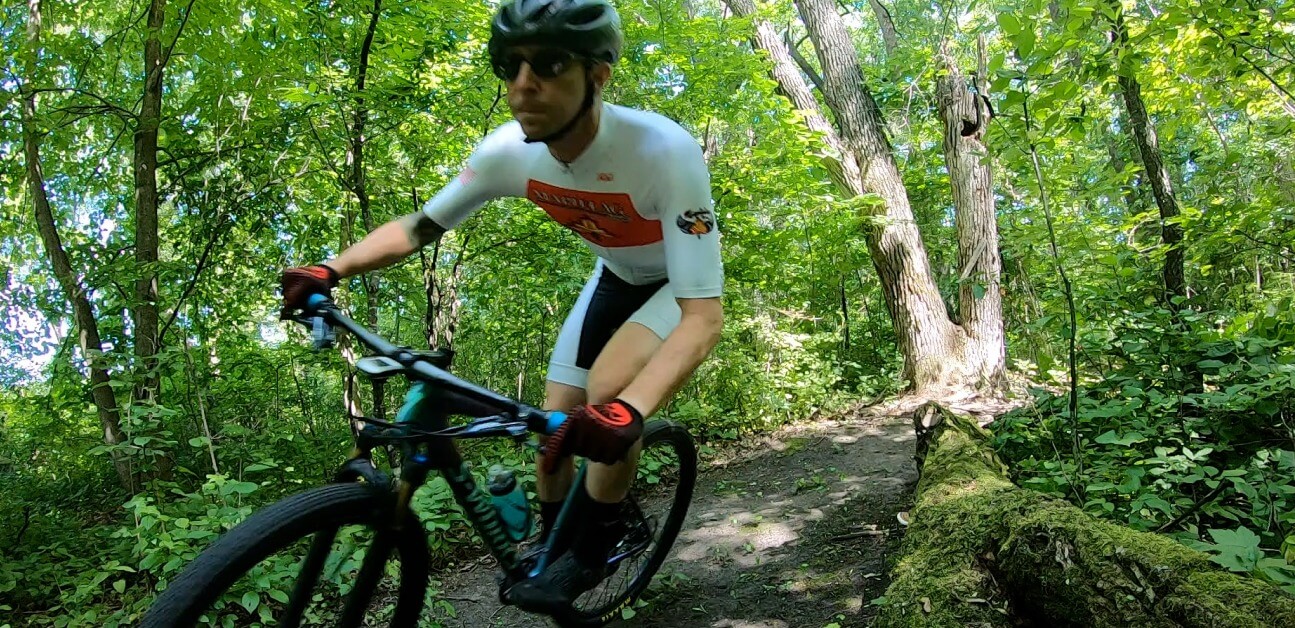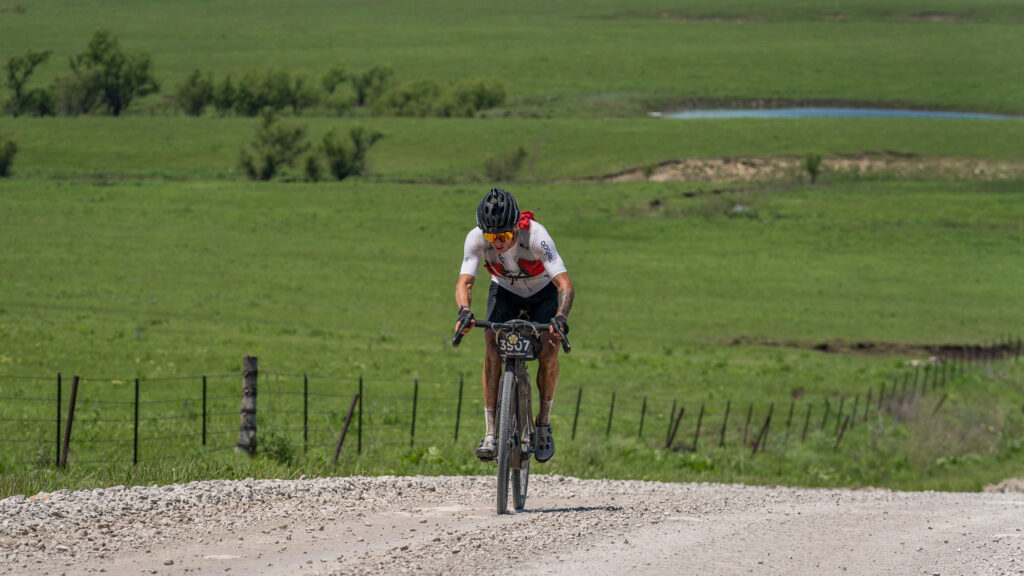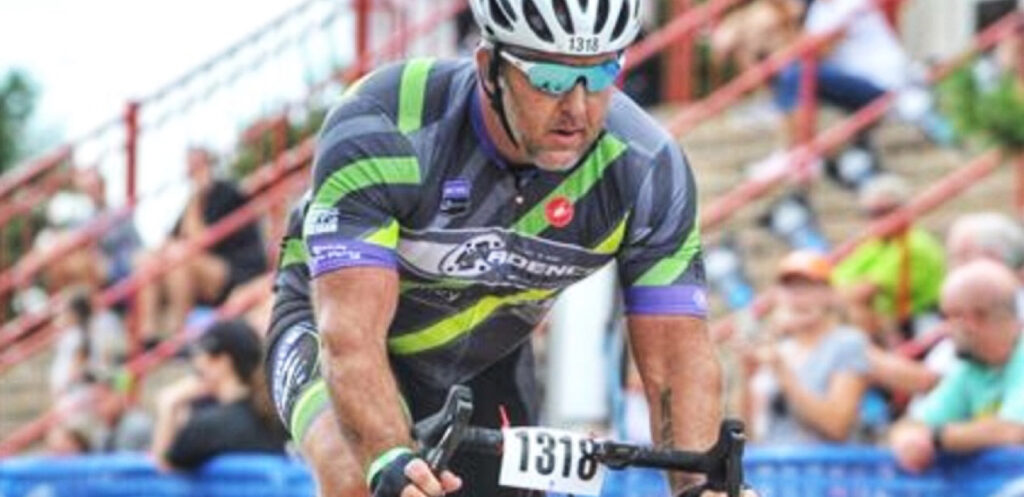Managing Mental Health and Training with Successful Athlete John Peter

John Peter is an endurance athlete with a long history of high-volume training and racing that masked many signs of bipolar disorder. But throughout the journey, this father, teacher, and high school coach discovered ways to balance life, training, and mental health.
Share your success story and tell us how TrainerRoad helped you reach your goals.
From Running To Cycling
John Peter has a long history with endurance sports that starting in high school with running cross country. In college, he competed in the 5 and 10K on the track and continued to run cross country. John was a typical college athlete—high training volume with little to no attention to nutrition or recovery.
After college, John continued high-volume training, running 60-90 miles a week for fitness and enjoyment. However, in 2010 while preparing for his first marathon, he partially tore his plantar fascia. The injury didn’t heal properly, so John found a new endurance outlet in cycling. He quickly took to the new sport, especially long-distance road and gravel events. He jumped right into 100-mile gravel events and found early success.
Signs of Something Amiss
To say John has a busy life would be an understatement. He is a father of five and a high school teacher, along with coaching track and soccer. In addition to this, John continued with high-volume cycling training simply because he knew from experience that his body could handle it. Considering his background in competitive running, where high volume was king, he dealt with the transition to high-volume cycling seemingly without any problems. So when John started TrainerRoad, he went straight to high volume.
Adaptive Training
Get the right workout, every time with training that adapts to you.
Check Out TrainerRoadHowever, signs were emerging that something was amiss. John could put together massive weeks of training, putting in multiple 800 TSS weeks. But what followed was the complete opposite. John didn’t want to get out of bed or even look at the bike, while getting little to no sleep. Over three years, 2017-2019, a pattern was becoming apparent—regular training, what John calls “super training,” and finally the nadir, where he didn’t ride and couldn’t get out of the bed.
Complicating everything was a positive test for Epstein-Barr virus in 2015. As he would go through the cycle of normalcy, highs, then lows, most of the medical advice he received suggested that it was complications from Epstein-Barr and just needed some extra rest.
The frequency of this pattern was often several times a year and began affecting everything in John’s life, with the lone exception of work. In 2019 while preparing for the Maah Daah Hey 100 mountain bike race, he experienced more swings. He entered a low period just before the race, and while John made it through the event, he didn’t touch the bike for a long time afterward.
Differentiating from the Ebb and Flow of Training
More signs began to emerge as John would experience giant swings of productivity and creativity, going without sleep and sometimes even food. At the time, he saw these times are being super productive. By July of 2020, he crashed again and didn’t get out of bed for ten days.
Years before, it was customary to feel tired at the end of a big training block but look forward to easy rides. But for John, he didn’t even want to see his bike or get out of bed. Additionally, his generally optimistic outlook on life would dramatically shift to a pessimistic one, changing his thought process to the highly negative one.
If you are in need of help or support, please contact:
In the US: National Suicide Prevention Lifeline — 1800-273-8255
In the UK: Samaritans — 116 123
Bipolar Disorder Diagnosis and Treatment
In the fall of 2020, John experienced the third cycle of the year. Feeling terrible while walking into school, he thought it might be Covid symptoms. Not wanting to ruin the ongoing soccer season, John went to see the school nurse, and as he explained all the issues, the nurse promptly directed him to see his doctor to talk about mental health, depression, and anxiety.
Everyone is broken, in some form, and carries it with them. Some are better at hiding it than others. It had gotten to the point where I couldn’t hide it anymore
John Peter
Eventually, John was diagnosed with bipolar disorder, a mental disorder that causes unusual and sometimes dramatic shifts in mood, energy, and activity level through manic and depressive episodes. Biological and genetics play a factor in the causes, and John had a family history of the disorder. In hindsight, it all makes sense for John, “but at the time, we just didn’t know what was going on.”
More than anything, John recommends talking to a medical professional. With the stigma surrounding mental health, it’s easy to fear talking about mental issues or depression. Deep down, John believes that we’re afraid to admit there’s something wrong. As John puts it, “everyone is broken, in some form, and carries it with them. Some are better at hiding it than others. It had gotten to the point where I couldn’t hide it anymore.”
Treatment
John’s treatment plan was a mix of medicines, counseling, and exercise. It required a paradigm shift with three primary goals— get some exercise six days a week, sleep seven to eight hours a night, and do what is needed to be consistent in being there for himself and his family.
As part of the treatment plan, John’s training was limited. From October to December, he only walked 10-15 minutes a day. By March, he was able to get on the trainer with some limits on heart rate. Eventually, he slowly rebuilt things and, in May, started low-volume structured training.
Essentially, John’s reframed training. Now, he thinks of in terms of “whatever I’m doing today, needs to allow me to recover. So tomorrow, I can do what I need to do.” Looking back on his high-volume training, John says, “it was a bit crazy to do that while managing everything in life.”
Redefining Success
As racing was a part of John’s life, the other question was, “what is racing going to look like for me now.” This summer, John is planning on a few local cross-country mountain bike races, but with a different mindset. So often, athletes rest their identity on the result. Instead, John has chosen to focus on the journey of developing healthy habits and enjoying the process because “a bad performance, or even a performance that doesn’t go how you want it, doesn’t change all the work. So let’s take all the good and bad, then move forward.”
If you like to get in touch with John, you can find him on Instagram.


